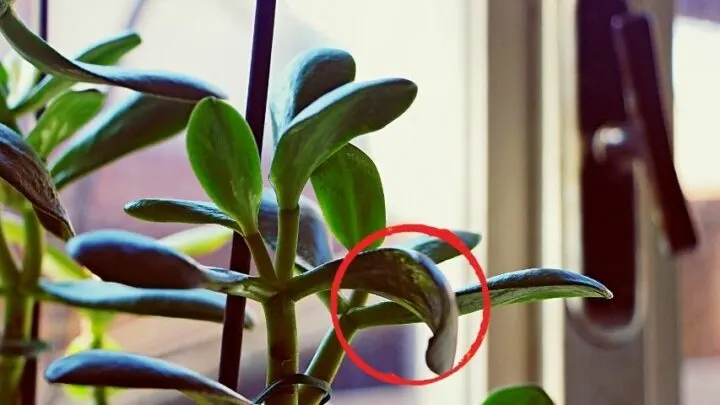The Jade plant is a houseplant that has been grown in America and Europe for over a century, but it originated in South Africa.
The plant is a low-maintenance succulent with water-storing foliage, branches, stem, and root systems.
It makes a good houseplant since it blooms well in pots with limited root area, is somewhat low to the ground, prefers mild, moist environments, and withstands negligence.
However, not providing proper care can cause problems for it, such as drooping.
Table of Contents
Why Is My Jade Plant Drooping?
Jade plant leaves often bend and start to droop due to insufficient watering, fertilizing, and root rot. Temperature fluctuation, poor soil drainage, not getting enough sunlight, and insect infestation can also lead to a drooping Jade plant.
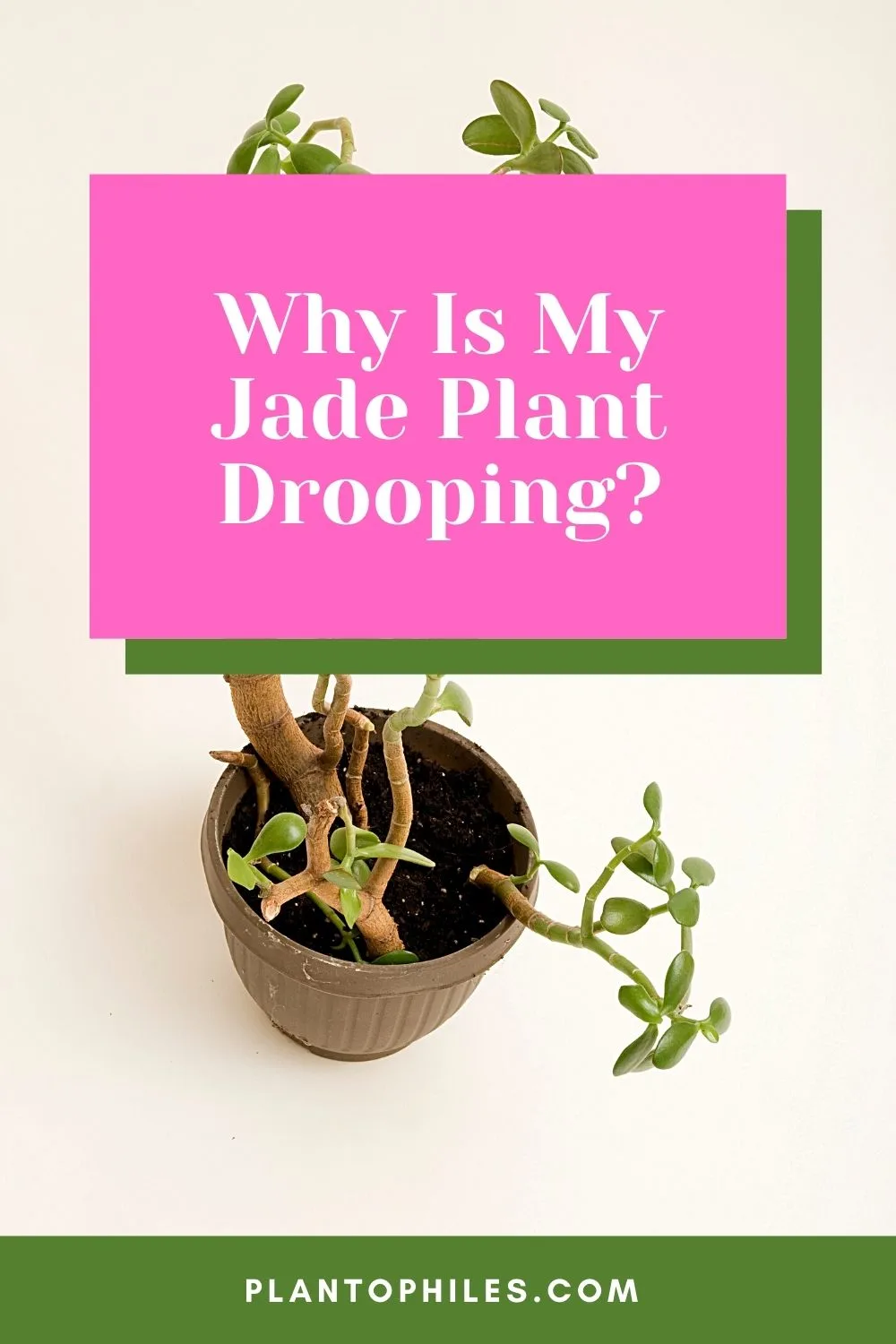
Why Is My Jade Plant Drooping?
7 Reasons Why Your Jade Plant is Drooping
1. Insufficient Watering
Inadequate watering is among the most common cause of drooping leaves in Jade plants.
Both overwatering and underwatering are damaging to the Jade plant, resulting in plant drooping. The root of a plant affected with root rot cannot carry moisture and minerals toward the leaves.
Moreover, the stem will also droop while getting soggy and falling off.
Overwatering the plant produces root rot, which disrupts the plant’s entire nutrition pathway. It also soaks its root, creating an anaerobic environment for rot microorganisms.
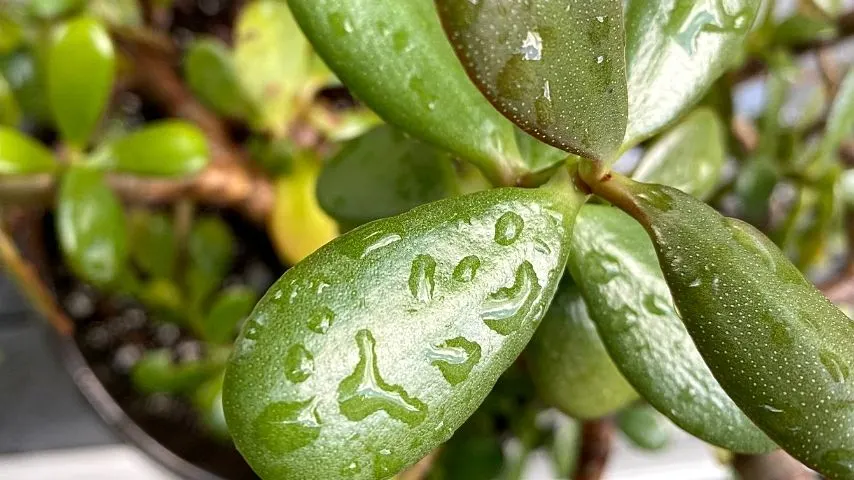
Both over- and underwatering of a Jade plant can lead to it drooping
Root rot will eventually destroy the entire plant if left untreated.
2. Inadequate Lighting
Slender stems start drooping due to the weight of heavy leaflets, which are caused by inadequate sunlight. In poor lighting, the blades would shrink, darken, and lose their charm.
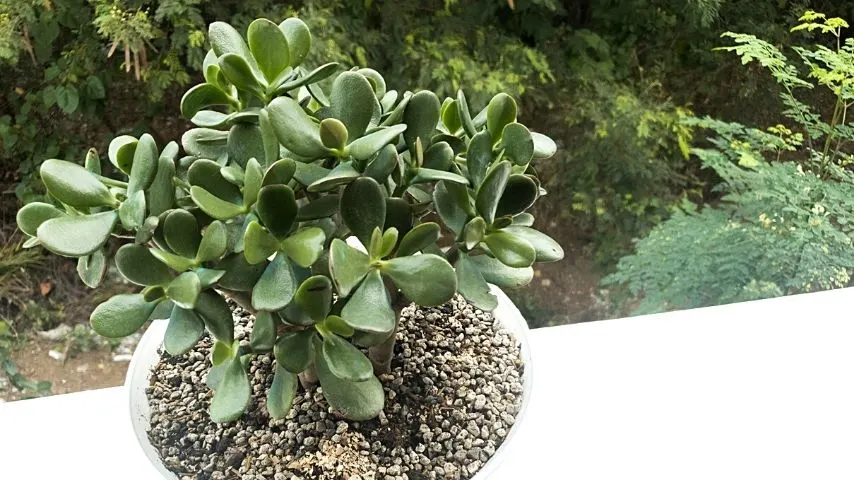
When your Jade Plant doesn’t receive enough sunlight, it begins drooping
You may not notice the issue until the blades fully drag the branches downward when you water.
In addition, poor lighting also slows the growth of the Jade plant since it damages the plant and lowers the photosynthetic process.
Extreme sunlight exposure appears on the foliage as brown patches, so adjust indoor plants before transplanting them to sunny areas outdoors.
Hence both extreme and poor sunlight leads to problems for the plant.
3. Too Much Fertilization
Although Jade plants are not heavy feeders and can thrive in poor soil, they still require nutrients to produce healthy branches and prevent drooping.
When the plant is overfertilized, it grows slower.
According to the University of Wisconsin, Jade plants should only be fertilized every two months during the growing season in spring and summer.
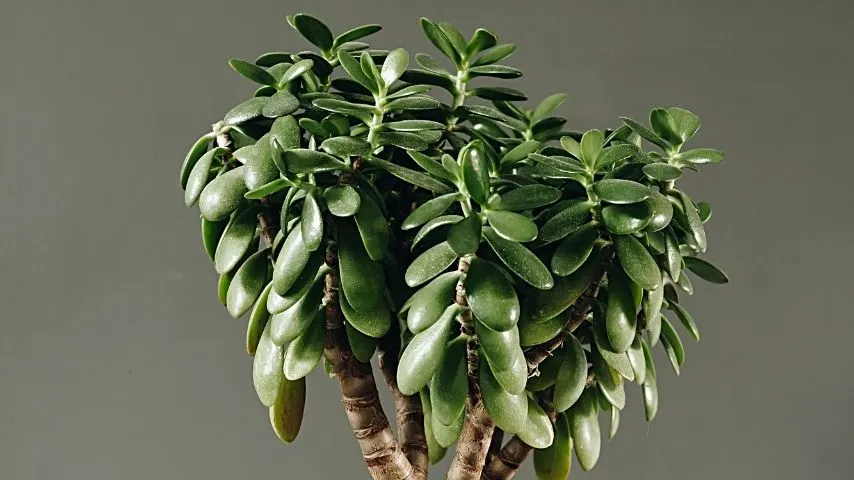
Slowing down of your Jade Plant’s growth is a sign of overfertilization
In addition, when a plant is treated with excess fertilization, it generates excess salt accumulation, killing the plant’s bacterial growth and microbes in the soil, blisters the leaves, and plugs the supply line.
They are moderate feeders thus, avoid over and under fertilizing your plant.
4. Improper Drainage System
The drooping foliage and damp branches are often a result of a faulty drainage system. The excess wetness within soil and stems is caused by poor drainage.
Gardeners are unaware that poor drainage contributes to overwatering circumstances. Therefore, this extreme humidity leads to bacterial diseases and plants’ root rot.
A proper drainage soil mix makes it easier for the plants to flourish.
Another factor is peat to avoid since it tends to reject water when dried. Consequently, the leaflets weaken and droop, and thus the plants die as a whole.
5. Extreme Temperature
Another factor contributing to the Jade plant’s drooping is excessive heat. Jade plants can withstand temperatures as low as 40 degrees Fahrenheit (4 degrees Celsius) but not below this.
Extreme temperature changes might lead to the Jade plant turning brown.
The optimal temperature required for Jade plants varies from 65 degrees Fahrenheit to 75 degrees Fahrenheit (18-23 degrees Celsius) throughout the daytime and from 50 degrees Fahrenheit to 55 degrees Fahrenheit (10-12 degrees Celsius) at nighttime.
As a result, it is best to place your Jade plant inside the shadow throughout the afternoon and evening.
6. Repotting
The Jade plants dislike being replanted frequently. As a result, repotting your Jade plant is far more harmful to the plants than trimming.
Jade plants will not cause any problem for being a little root-bound. The roots of these species are deep, and they grow more slowly.
As a result, repotting them can be stressful, especially when done throughout the winter.
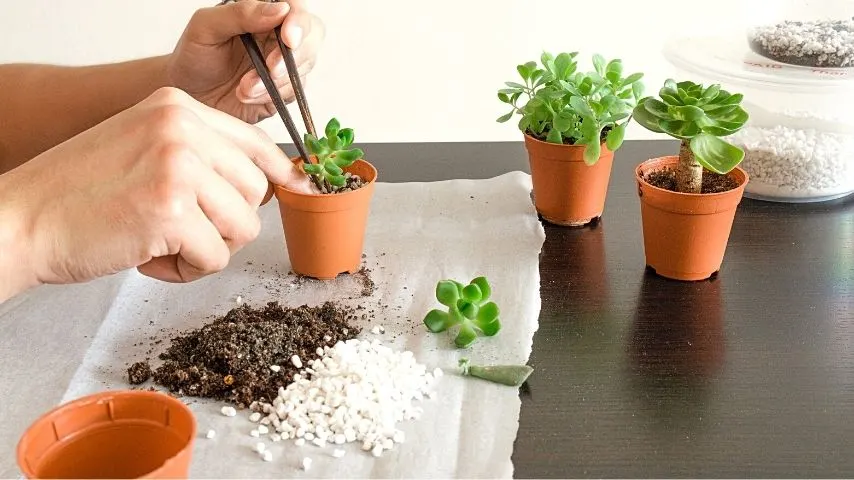
Repotting your Jade Plants frequently stress them out especially when you do it in the winter
Additionally, it can cause droopy foliage, fading leaves, and plant withering.
7. Pests and Diseases
The first signs that insects and pests have penetrated the plant are drooping leaflets.
Mature Jade plants are disease-resistant, and insect attacks are simple to eradicate.
However, no such species is completely free from disease and parasites. Mealybugs, parasites, creepy crawlies, and insects commonly infest Jade plants.
The 7 Key Solutions to Keep Your Jade Plant Safe from Drooping
Following are the solutions to keep your Jade plant safe and prevent them from drooping.
1. Proper Watering
In the summer, watering is usually done for 3-4 weeks. During the winters, this plant stays inactive and requires far less water.
Therefore, do not rely on a definite plan but water them whenever the soil is completely dry.
2. Adequate Lighting
The immature Jade plant should be kept in strong indirect light for almost 4 hours to accelerate its development and growth.
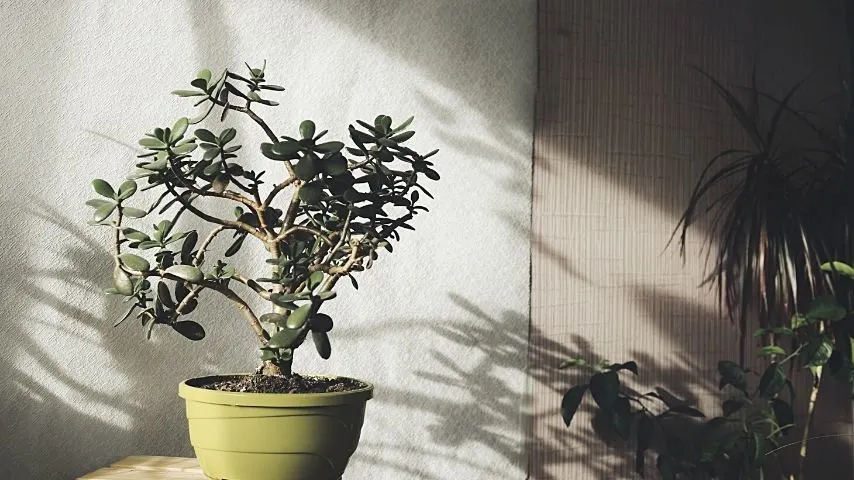
Keep your Jade Plants in an area receiving strong indirect light for 4 hours for accelerated growth
It will assist with growth in the future by repairing the weakened branch and droopy leaflets.
3. Fertilization
In comparison to other home houseplants, Jade plants take longer to recover.
Give them high-nitrogen feed that has diluted to medium supplemented.
You can apply moderate treatments once a month and throughout the winter and fall during the growth period.
4. Proper Drainage System
For proper draining, choose a pot with an appropriate drainage hole. You must examine whether the drainage openings of the pot are appropriate.
During watering, the surplus water must flow after two minutes. This indicates that the pot’s draining mechanism is adequate.
5. Proper Repotting
If you would like to grow the Jade plants, do so with dry nutritious soils in the middle of spring or summer.
When watering, allow the plants to air dry for several days.
Replant only if the plants have outgrown their container. Never repot the Jade plants since it causes traumatic stress to the plants, which manifests itself as curled and drooping leaflets.
Frequently Asked Questions about Why My Jade Plant is Drooping
Is it important to fertilize the Jade plant properly?
Providing the Jade plant with sufficient fertilizer is key to its thriving for years. However, any fluctuation in the fertilization care will only lead to a problem for the plant, the major one being the drooping of your plant.
How often should you repot to avoid drooping of the Jade plant?
It is ideal to replant it during the spring and summer seasons. Another option to consider is to replant only if it has outgrown its pot.

Daniel has been a plant enthusiast for over 20 years. He owns hundreds of houseplants and prepares for the chili growing seasons yearly with great anticipation. His favorite plants are plant species in the Araceae family, such as Monstera, Philodendron, and Anthurium. He also loves gardening and is growing hot peppers, tomatoes, and many more vegetables.

